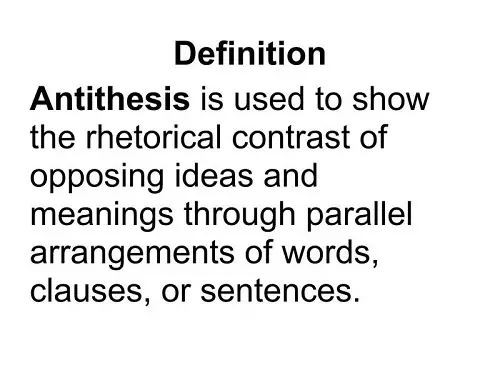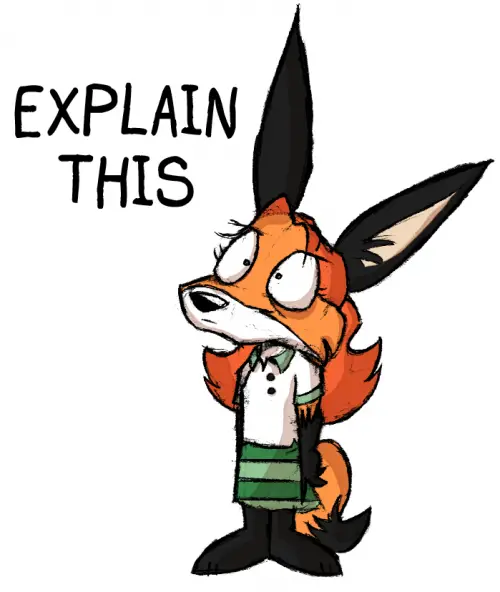
Tongue twisters you might be tempted to think when first encountering these two words. Wrapping the words around your tongue is an interesting experience and a challenge too. It feels foreign, but good to say:
Ok-si-mawr-on – as you pronounce the word oxymoron.
An-tith-uh-sis – as you pronounce the word antithesis.
Both these words have parts to play in the English language. Together they can be classified as parts of speech and figures of speech. At first glance their functions are similar but with further analysis perhaps there are differences that can be made clearer and better understood. Is it safe to say that opposites attract? Why do opposites attract? Perhaps it is because they show each other off better and make the meaning of something clearer. The oxymoron is made of opposites highlighting a statement or literary quote. The antithesis is similar in its approach to embellishing the written work or character driven story. Similar, but not the same.
Points to consider:
Words have – origins, meanings, parts of speech, figures of speech, synonyms, antonyms, uses in literature and emphasis for writers and entertainers.
Words are the tools used in language and are there to make spoken and written works complete.
- ORIGINS:
Oxymoron comes from Greek and is defined as:
Oxy – sharp and moron – stupid. Two opposite ideas are joined to give an effect to the written word.
Antithesis comes from Greek and is defined as:
Anti – against and thesis – position. An opposition or contrast of words used in the same sentence to highlight the difference between two ideas adding an interesting aspect to the written word.
- MEANINGS:
Oxymoron it is a contradiction of terms usually made up of an adjective and a noun combination. It gives a point to the statement that it illustrates. Ie. Act naturally – be more than natural.
Antithesis is an opposition or contrast of words used in the same sentence. It highlights the difference between two opposite ideas by putting them in the same sentence. The antithesis of right is wrong.
- PARTS OF SPEECH AND FIGURES OF SPEECH:
Oxymoron: the oxymoron is a noun and its plural is oxymorons or sometimes it is referred to as oxymora. The use of the oxymoron helps add a certain dramatic effect to the written word. It is a rhetorical figure of speech with two opposite ideas joining together for a different effect. The self-contradictory terms of an oxymoron can bring about a paradox effect as the oxymoron relies on two words of conflicting meaning. The oxymoron can also be an adjective when used as oxymoronic.

Antithesis: the word antithesis is used as a noun when saying ‘Tom is bold and handsome, the antithesis of his brother.’ The plural of antithesis is antitheses. It is also used in rhetorical speech as a way to highlight the conscientiousness of the listener or reader. For example Martin Luther King said: “We must learn to live together as brothers or perish together as fools”
- SYNONYMS
Oxymoron: paradox, antithesis, euphemism, hyperbole, satire are all words that imply a similar concept.
Antithesis: contrast, converse, antipode, contrary, discord, difference are words that compare in a similar way to antithesis.
- ANTONYMS
Oxymoron: review, repetition, revision, duplicate are words that express the opposite meaning to oxymoron.
Antithesis: same, similar, copy, duplicate and concurrence are words that convey the opposite meaning of antithesis.
- USED IN LITERATURE AND PUBLIC SPEAKING
The oxymoron has played a vital part in adding a dramatic effect to speeches and literary characters. It is the contradiction that makes the reader or listener stop and think. Well known characters in literary circles and the dramatic arts have used oxymorons to great effect.
Comments like:
‘I am busy doing nothing’
‘This is your only choice’
‘Random order’
‘Awfully good’ to name a few.
Quotes from well-known characters also highlight the meaning of an oxymoron.
Oscar Wilde said: “I can believe anything provided it is quite incredible.”
Samuel Goldwyn said: “Modern dancing is so old fashioned.”
Andy Warhol said: “I am a deeply superficial person!”
Charles Lamb said: “I like the smuggler. He is the only honest thief”
Shakespeare loved to use oxymorons in his plays. Romeo and Juliet is a great example of a series of oxymorons as Romeo says in Act one Scene one:
“Oh heavy lightness, serious vanity, Misshapen chaos of well seeming forms. Feather of lead, bright smoke, cold fire, sick health.
He is declaring his love for Rosaline in the beginning of the play. He sees a fine line between love and hate as he is also angry with the family feud. He condemns the choices people have made. Life is confusing for him and feels like an oxymoron.
In Hamlet, Shakespeare uses the oxymoron – cruel to be kind.
While Julius Caesar the play uses the oxymoron of ‘Fearful bravery.’
JRR Tolkien, author of the Hobbit and Lord of the Rings, says his name is an oxymoron when translated from the German equivalent of toll/Kuhn meaning dull/keen.
Poets make good use of oxymorons to depict contrasts and descriptions that add value to their poems. They are used as brief references to emotions and different values.
Milton refers to ‘darkness visible’
Byron to ‘melancholy merriment’
Antithesis in literature and the theatre brings characters alive as the play writer can use the personality of one character to show up the opposite traits of personality in another. The lovely, kind, gentle character of Snow White is perfectly set against her antithesis – the mean ugly and Wicked Queen. Their characters and actions are completely opposite to one another. The Tale of Two Cities, by Charles Dickens, refers to the ‘Best of times and the Worst of times’ two opposites that bring out the theme of the book.
Famous quotes in history also show how an antithesis can bring across the point more clearly and highlight the meaning of the quote with more emphasis on what the deeper message is. When Neil Armstrong said, as he stepped on the moon…’one small step for man, one giant leap for mankind’ he was not really talking about a walk on the moon. The antithesis used here highlights the enormity of that step for science and the future of space exploration.
The explanation behind antithesis is a little more complex than the oxymoron as the word antithesis is part of a three point interpretation. It is where the contradiction or opposite gets its antithesis from the initial proposition known as the thesis. This is the statement that is then challenged by the antithesis and the outcome is the synthesis which is the final truth behind both of the statements. Basically the point to be made is the thesis and the counter argument is the antithesis and the synthesis is the conclusion reconciling both statements.
For example:
Thesis: mammals can’t lay eggs.
Antithesis: No! Monotremes can lay eggs {ie the duckbilled platypus}
Synthesis: No mammal can lay eggs except for monotremes.
The antithesis is used to lead the reader to a valid constructive decision.
In conclusion is there a difference between these two figures of speech?
They both use contrasting ideas to strengthen their argument and make their statements more memorable, more dramatic. They both find their way into drama, literature and poetry; they are both used in famous quotes and characterisations. The subtle difference comes in the placement of the words as the oxymoron is closely related to the two parts of speech the adjective and the noun showing the opposite concept involved while the antithesis is clearly two opposite words used to add value to a statement by showing the meaning of the words in a paradoxical fashion.
When you consider the two parts of speech, oxymoron and antithesis is there a definite possibility that they could have the same differences? The fact of the matter is they both give the reader an idea of the attraction of opposites. Their value lies in using words that can stand alone together and still provide awfully good comparisons and contradictions to use in the English language.











